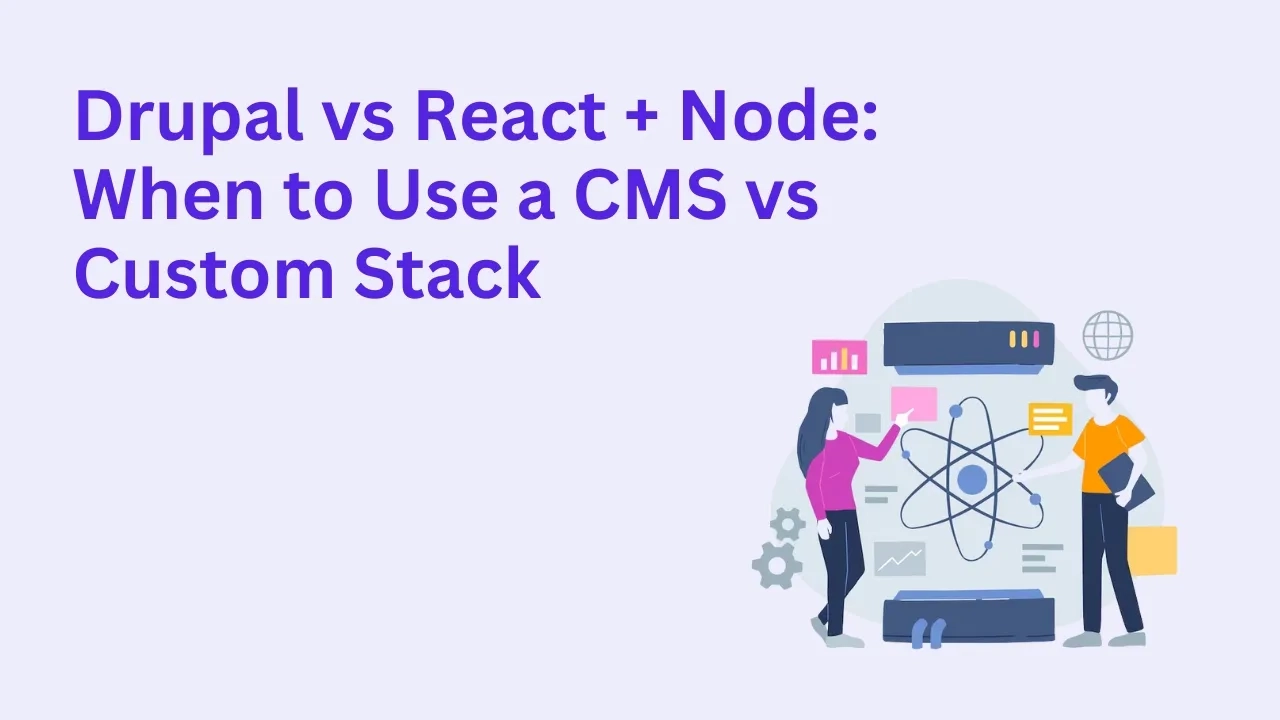Drupal vs React + Node: When to Use a CMS vs Custom Stack

Choosing the right tech stack for your web project is one of the most critical decisions you'll make. Should you go with a powerful content management system like Drupal, or build a fully custom solution using React + Node.js? The answer depends on your project’s goals, budget, and technical requirements.
In this blog, we break down when to use a CMS like Drupal and when a custom stack might make more sense.
What Is Drupal?
Drupal is a leading open-source CMS known for its security, scalability, and flexibility. It comes packed with built-in content management features and an extensive module ecosystem that enables rapid development of complex digital experiences.
It's particularly effective for:
Government and enterprise sites
Higher education portals
Healthcare platforms
B2B and B2C websites with structured content needs
Explore how we leverage Drupal for performance-driven websites at Drupalify.
What Are React + Node?
React is a front-end JavaScript library for building user interfaces, while Node.js is a runtime environment that allows JavaScript to run on the server side. Together, they power highly interactive, real-time applications, commonly used in:
SPAs (Single Page Applications)
Custom dashboards and tools
Real-time chat apps or collaboration platforms
Custom business software
React + Node offers maximum flexibility but requires more setup, more code, and often a bigger budget.
Comparing Drupal and React + Node
1. Development Speed
Drupal: Faster to launch thanks to built-in features, modules, and a strong community.
React + Node: Slower to get started; you’re building from scratch.
2. Customizability
Drupal: Highly customizable, but within the CMS structure.
React + Node: Total freedom — but that also means more responsibility and complexity.
3. Security
Drupal: Has enterprise-grade security with frequent updates and a dedicated team.
React + Node: Security depends entirely on how you implement it. More room for error.
4. Content Management
Drupal: Best for teams managing large volumes of content.
React + Node: Needs to integrate a CMS (headless or otherwise) if content workflows are required.
5. Budget
Drupal: Cost-effective for content-heavy websites with long-term maintenance in mind.
React + Node: More expensive due to increased development hours and custom integrations.
When Should You Choose Drupal?
Choose Drupal when you need:
A feature-rich website that can scale
Built-in content workflows and editorial tools
Lower time-to-market
Enterprise-grade security and long-term support
When Should You Choose React + Node?
Choose React + Node when you need:
Highly interactive UIs
Real-time features (e.g., live updates, push notifications)
Custom workflows or non-standard architecture
Full control over front-end and back-end behavior
Hybrid Option: Headless Drupal with React
Sometimes, you don’t have to choose. Headless Drupal allows you to use Drupal for content management while using React on the front end. This gives you the power of a CMS with the flexibility of a custom UI. It's ideal for enterprise teams who want the best of both worlds.
Final Thoughts
Drupal continues to be a go-to choice for organizations seeking robust, scalable, and secure websites. But if your project leans heavily into custom interactivity and real-time user engagement, React + Node may be worth the investment.
Need help choosing the right approach? Our team at Drupalify helps businesses make technology decisions aligned with their goals.
Let’s talk about what’s right for you.








